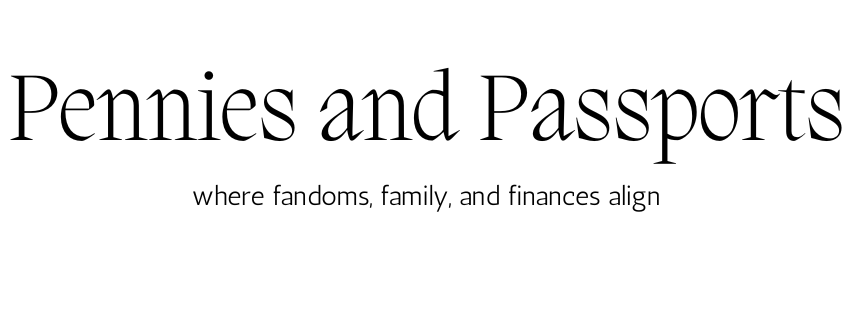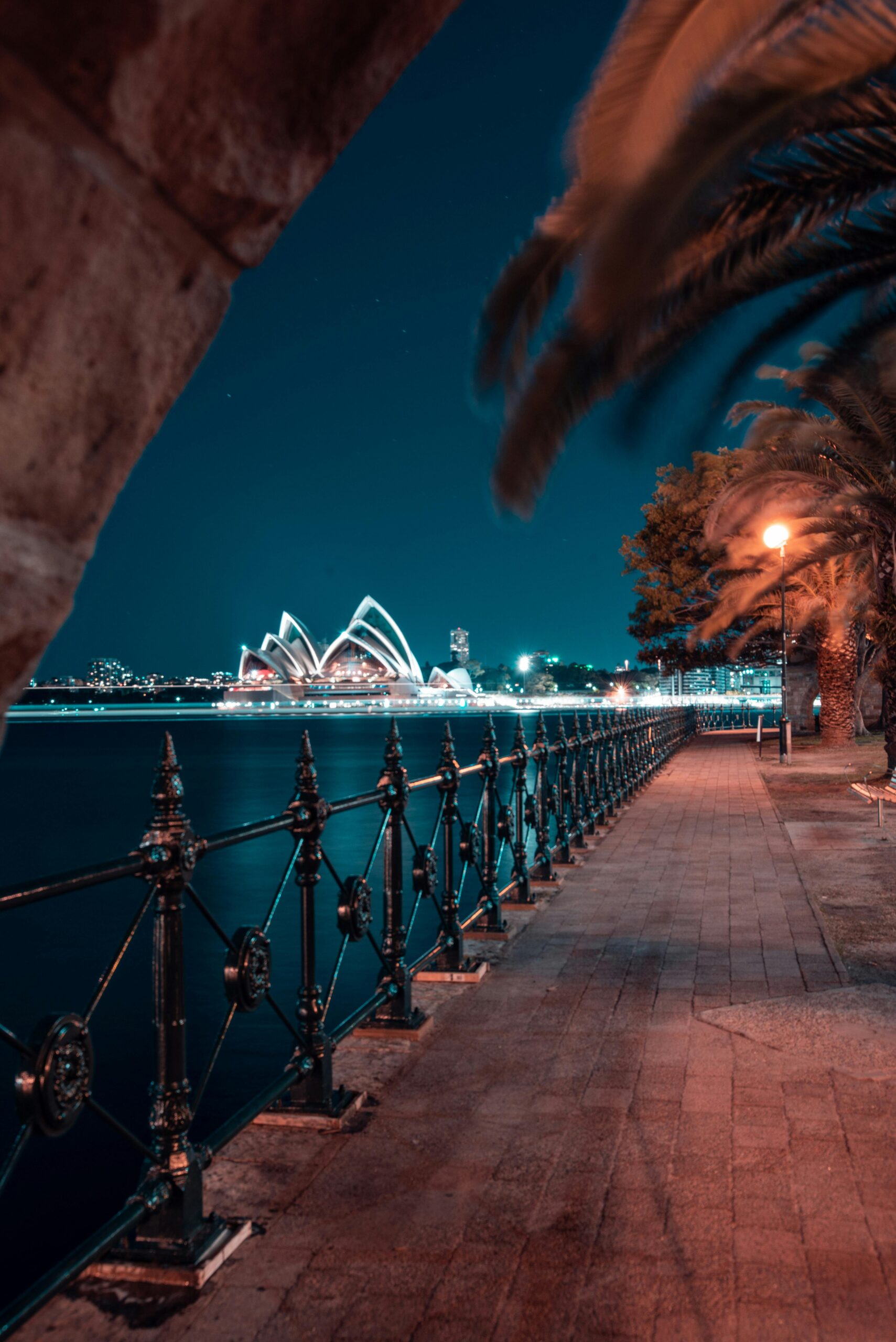
10 Smart Ways to Save Money for Travel in 2025
10 Smart Ways to Save Money for Travel in 2025
Finding how to save money for travel doesn’t have to be overly complicated. Most of us dream about amazing destinations and making memories that last forever, but saving money often gets in the way of our next adventure. I’ve found that building a travel fund doesn’t need huge sacrifices – it just needs smarter financial choices.
Your plans might include a three-month backpacking trip or a luxury vacation. The challenge stays the same: how to save money without putting your life on pause. Here’s the good part – we have 10 practical strategies that will help build your travel fund in 2025. These combine tried-and-tested saving methods with new ways to make money.
This piece covers everything from setting up multiple income streams to cutting daily expenses. These methods have helped thousands of travelers reach their goals, and they will work for you too. You can turn those travel dreams into reality faster than you think. Read on for tips and hints on how to save money for travel.

Master Your Money Mindset
Money management isn’t something most of us learned in school. Over the last several years of helping others plan their travel dreams, I found that there was a proper money mindset that forms the foundations of successful travel savings.
Understanding your relationship with money
Money itself doesn’t cause stress – not knowing what your money is doing creates anxiety. Your first step to change your relationship with money requires an honest look at your finances. Nearly half of Americans don’t even have a simple emergency fund, which shows how significant it is to develop better money habits.
Here are the mindset changes that changed my approach to saving:
- Separate emotions from financial decisions
- View saving as investing in experiences
- Focus on long-term gains over short-term pleasures
- Make use of small, consistent actions
Setting realistic travel savings goals
The goal of ‘save money for travel’ needs specificity. The sort of thing I love is that knowing your destination and duration helps create a concrete savings target. Breaking down your larger travel goal into weekly or monthly targets makes it manageable and achievable.
The Balancing Act
The struggle between living in the moment and saving for future adventures is real. The solution doesn’t require shutting down your current life – it needs that sweet spot between enjoying today and building for tomorrow.
Developing a savings-focused mindset
A saver’s mindset revolves around making informed choices rather than impulsive decisions. It’s not about sacrificing all joy now, but finding balance between spending and saving. This philosophy shows saving money as a pathway to achieve financial freedom and build a stable future.
Making It Sustainable
Note that giving into temptation occasionally is perfectly fine – even healthy – to keep you sane and still enjoying the present. You need habits that last long-term. Regular savings will help you accumulate wealth over time and enjoy the benefits of compound interest.
This mindset goes beyond just saving money – it changes how you view resources and opportunities. Understanding the value of every penny earned and what it enables helps you make decisions that line up with your travel goals naturally.
Leverage Digital Tools for Savings
Our smartphones have become powerful allies that help us save money for travel in this digital age. The right apps and tools let us automate savings and track expenses better than ever.
Best money-saving apps for 2025
The latest generation of savings apps makes building travel funds easier without constant manual work. To name just one example, Frollo offers complete financial tracking by syncing accounts from over 100 banks and financial providers. These modern savings apps are great at providing automated insights and bill tracking features that keep us on top of our expenses.
These top savings apps come with standout features I’ve found:
- Real-time financial health monitoring
- Automatic bill payment tracking
- Customizable savings goals
- Smart spending categorization
- Instant payment notifications
Automated savings platforms comparison
Automation has changed how we save money. Platforms like Oportun look at your spending patterns and automatically move safe amounts into savings, so you’re never short on cash. Chime users benefit from automatic savings transfers that move a percentage of each paycheck straight to savings.
Dynamic pricing software has transformed travel savings. These tools use real-time data to help us get the best deals and stretch our travel budgets further. The software can set budget alerts and notify us when prices drop within our range.
Digital expense tracking tools
Digital tracking tools excel at categorizing expenses automatically. They help us understand our purchasing behavior by organizing spending into clear categories. The difference between expense tracking and budgeting is now clearer – budgeting apps help manage both income and expenses, while tracking tools focus on understanding where money goes.
Technology now provides detailed insights into travel spending. Modern tools offer features like daily spending budgets for food and transportation. These platforms can help us claim VAT refunds on travel expenses and save up to 20% on business-related costs.
The best apps blend security with functionality. They use multiple layers of protection, including encryption and secure connections, to keep our financial data safe while we save for travel. Many apps partner with FDIC-insured banks, which is reassuring because they protect our savings up to AUD 384,882.56 per depositor.
Create Multiple Income Streams
Multiple income streams have changed how I save for travel. A regular paycheck alone won’t fund all our adventures. Let me share how I’ve made my travel dreams more achievable by diversifying my income sources.
Side hustles for travel savings
The digital world offers countless ways to earn extra income. Freelancing has become my most reliable side hustle. Some writers earn between AUD 6.16k to AUD 7.70k a month. The best part about freelancing is its flexibility – you just need a laptop and stable internet.
These side hustles have proven most lucrative:
- Teaching English online (TEFL certification recommended)
- Virtual assistance for busy professionals
- Freelance writing and content creation
- Social media management
- Online course creation
Passive income opportunities
Passive income can really boost our travel funds. Property investments have yielded gross returns between 4% and 5% since 2010. Digital products need work upfront but can generate income while we sleep.
Sustainable passive income comes from understanding different asset classes and their returns:
- Fixed income and cash (3-4% average over 10 years)
- Shares and managed funds (3-5% with additional franking rebates)
- Property rentals (4-5% gross yield)
Investment strategies for travel funds
My strategic investment approach builds a sustainable travel fund. To generate an annual travel budget of AUD 23,092.95, you’d need approximately AUD 465,583.20 with a 4.96% return. This might seem overwhelming, but there are two practical ways to approach it:
Short-term Strategy: Two people can reach this goal in 4.5 years with monthly contributions of AUD 7,697.65. Reinvesting dividends during the building phase speeds up growth substantially.
Long-term Strategy: A more realistic approach splits monthly contributions of AUD 4,618.59 between two people over seven years. This strategy’s flexibility lets you adjust contributions based on your situation while progressing toward your goal.
Investment income offers great flexibility. It supports both travel and serves as a buffer for unexpected expenses or future opportunities. The effort to build these income streams pays off with sustainable travel funding.
Optimize Your Daily Expenses
My journey to better money management and digital tools showed me that daily spending habits make all the difference. Years of planning trips taught me that smart everyday expenses can build up a nice travel fund without feeling like you’re missing out.
Smart shopping techniques
My shopping habits changed completely when I started buying strategically. The average American household throws away AUD 985.30 worth of food each year – enough money to enjoy several nights at a beautiful destination. These days, I waste less than AUD 15.40 per year because I pay attention to what I buy and how I store it.
Here’s my tested shopping strategy that helps save money:
- Plan weekly meals, including snacks and lunches
- Compare unit prices to get the best value
- Buy seasonal produce and freeze extras
- Purchase staples in bulk during sales
- Shop at local markets to get fresh produce
Reducing monthly bills
Monthly bills give us the best chance to save money consistently. Looking closely at my utility usage showed me ways to cut costs without giving up comfort. My electricity bills dropped when I started using the air conditioner more wisely.
Quick Bill Reduction Guide:
- Review and cut unused subscriptions
- Switch to energy-efficient appliances
- Use cold water to do laundry when possible
- Turn off standby power on electronics
- Compare service providers each year to get better rates
Lifestyle adjustments that save money
The most influential changes in my life weren’t about cutting back – they were about making smarter choices. Rather than spending AUD 230.93 each week eating out in places like Stockholm, I now cook my meals at home and spend just AUD 92.37 on groceries for the whole week.
Many expensive habits can be swapped for equally enjoyable alternatives. To name just one example, see how I switched from paying gym fees to enjoying free outdoor activities and online workout videos. My social life changed too – now I host potluck dinners instead of going to expensive restaurants.
The sort of thing I love is how these changes add up over time. Smart housing choices helped me cut my biggest expense. Some of my travel-saving clients now rent out their spare rooms or garage space, which turns their largest cost into extra income.
Note that the goal isn’t to stop spending – it’s about being smart with our money. Tracking expenses for a month and sorting them into “needs” versus “wants” helps spot areas where money goes without giving real value back. This awareness helps me put more money toward travel while still enjoying life.
Maximize Travel Industry Savings
My years of travel planning have shown me that the travel industry offers amazing savings opportunities that most people miss. The sort of thing I love is how loyalty programs have grown from basic point collection into sophisticated reward systems that can cut our travel costs dramatically.
Loyalty program strategies
Modern loyalty programs are moving away from traditional point systems to create more tailored experiences. Today’s travel loyalty programs go beyond simple rewards with compelling incentives. Here’s something interesting – only 42% of travelers use their rewards fully, leaving much potential savings unused.
The most effective loyalty program strategies I’ve seen include:
- Early access to exclusive deals and bonuses
- One-of-a-kind event access
- Tiered benefits that boost involvement
- Lifestyle perks and privileges
- Community-based rewards
It costs up to 5 times less to keep existing customers than to get new ones, especially when you have travel brands. This knowledge helps me build relationships with specific brands and maximize benefits over time.
Credit card travel rewards
Credit card rewards have become more sophisticated in 2025. Some cards now offer up to 250,000 bonus membership rewards points. These points can lead to huge travel savings with strategic use.
Here’s a comparison of current top reward offerings from my research:
| Card Type | Bonus Points | Key Benefits |
| Platinum Business | 250,000 | Half annual fee |
| Standard Platinum | 150,000 | Premium travel perks |
| Business Rewards | 130,000 | Airline-specific benefits |
Point values vary by a lot depending on their use. I want to get at least 1 cent per point value, especially for flight redemptions.
Deal-finding techniques
Years of trial and error helped me develop several working strategies to find the best travel deals. Consumers get between 6,000 to 10,000 brand messages daily, including travel deals. This makes filtering through the noise vital.
Timing matters most when booking travel. Mid-week flights usually cost less than weekend departures. I’ve saved money by booking flights during off-peak hours. Price comparison tools without cookies work great since they prevent price inflation based on search history.
“Mystery deals” and last-minute bookings have become my most successful strategies. Airlines sometimes offer free or discounted accommodations during long layovers. This turns a connection into a bonus mini-vacation.
Modern coalition loyalty programs now enable cross-brand incentive campaigns. My savings grow when I combine airline miles with hotel points and credit card rewards. This creates a powerful savings multiplier effect. Careful planning and strategic use of these programs help me cut travel costs while enjoying premium experiences.
Build a Travel Emergency Fund
My years of helping travelers prepare for their adventures taught me that an emergency fund isn’t just a safety net – it’s your ticket to worry-free exploration. Let me share how I’ve helped countless travelers build their emergency funds the right way.
Calculating emergency savings needs
The ideal emergency fund for travel isn’t one-size-fits-all. Financial experts recommend having three to six months of expenses saved as a baseline. Travelers with mortgages and dependents should aim for the higher end of that range.
My tried-and-tested formula for calculating your travel emergency fund:
| Duration | Basic Emergency Fund | Additional Travel Buffer |
| 1-3 months | 3 months expenses | +20% of travel budget |
| 3-6 months | 4 months expenses | +25% of travel budget |
| 6+ months | 6 months expenses | +30% of travel budget |
Starting small makes a difference. Setting aside just AUD 30.79 weekly can grow to over AUD 1,539.53 in a year. This creates a solid foundation for your travel emergency fund.
High-yield savings accounts
High-interest savings accounts work perfectly for emergency funds. Current rates are hovering around 5.50%, with some accounts offering up to 5.75%. These rates have increased substantially in the last two years.
The best accounts should have these features:
- No ongoing account-keeping fees
- Monthly interest payments
- Easy access to funds
- Online banking capabilities
- FDIC insurance protection
Separating emergency funds from regular savings accounts works well. This separation prevents accidental spending of emergency funds while keeping them easily accessible when needed.
Protection against travel setbacks
My travel planning experience shows how proper protection can save travelers from financial disasters. Travel insurance is a vital shield against unexpected costs, especially when you have to deal with Western countries’ astronomical healthcare expenses.
Detailed protection should have:
Medical Coverage Healthcare abroad can quickly drain your savings. Travel insurance isn’t a luxury – it’s essential protection against shocking medical bills.
Accommodation Protection Your emergency fund combined with travel insurance can cover unexpected hotel stays during flight cancelations or delays. This dual protection has saved travelers thousands in unplanned expenses.
Lost Baggage Coverage Your emergency fund should cover essential item replacement if luggage gets lost. Travel insurance typically gives you a daily allowance for necessities until your bags arrive.
Keeping your emergency fund in a liquid account that earns interest on your deposit is valuable. You can access your money quickly without penalties while earning interest.
An emergency fund creates a detailed safety net beyond just saving money. Automated savings help build this fund quickly. Regular scheduled payments into a dedicated emergency account ensure steady growth.
Travelers with strong emergency funds enjoy their experiences more. They move confidently, ready for unexpected situations. This peace of mind lets you focus on creating memories instead of worrying about potential problems.
Conclusion
Smart travel savings combine mindful spending, careful planning, and modern tools. I’ve helped many people reach their travel dreams and learned that these approaches create a reliable path to adventure.
Saving money to travel doesn’t mean strict budgets or extreme sacrifices. You need to make smart choices, use digital tools effectively, and create multiple income streams. This approach works well because it’s eco-friendly – these habits stay with you long after achieving your 2025 travel goals.
These strategies work together perfectly. Your emergency fund keeps you secure, loyalty programs boost your savings, and smart daily spending creates extra cash for adventures. Most travelers I help succeed by taking small steps first and then expanding their money-saving habits gradually.
Saving money for travel becomes an exciting journey in itself. Each small victory, from trimming monthly expenses to earning extra cash, moves you closer to your dream trip. With these strategies, you’ll build your travel fund faster than you thought possible!
More posts like this : How to Set Smart Budget Money Goals for Achieving Your 2025 Financial Goals





